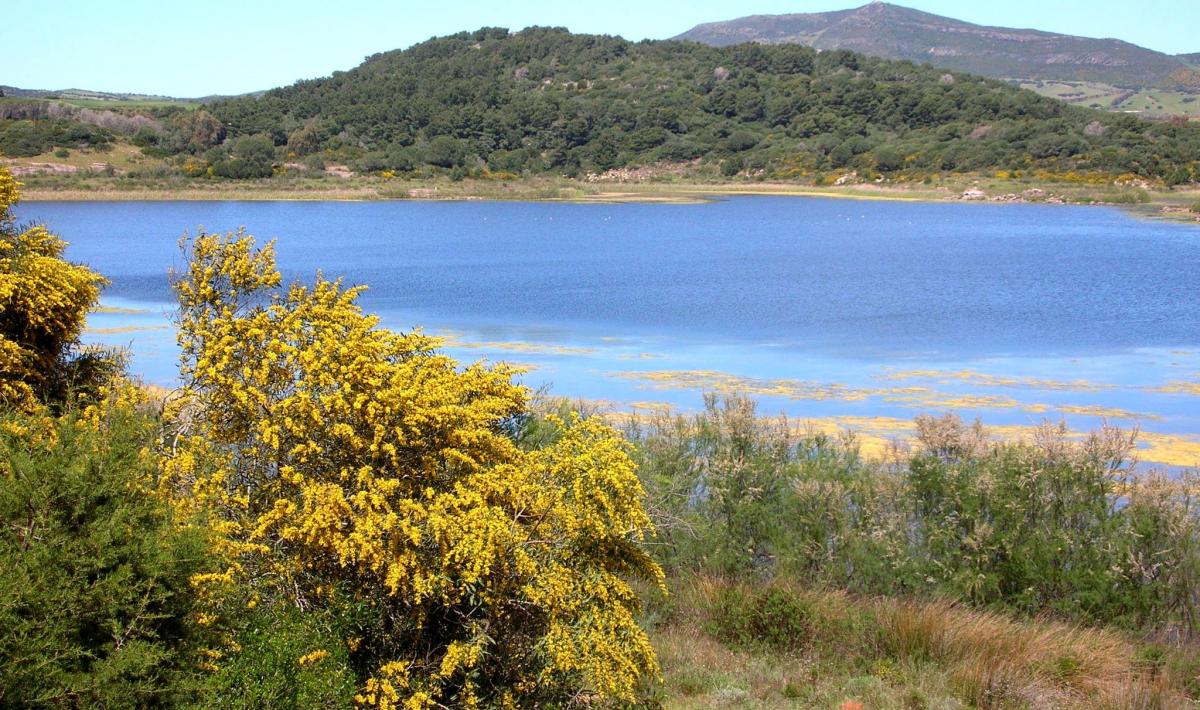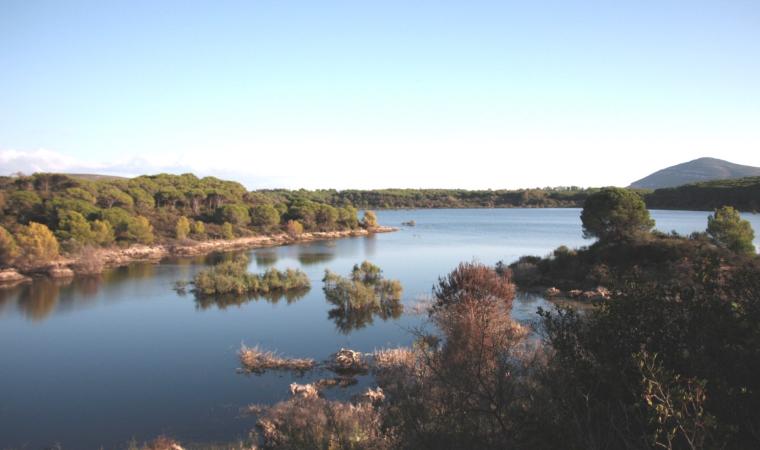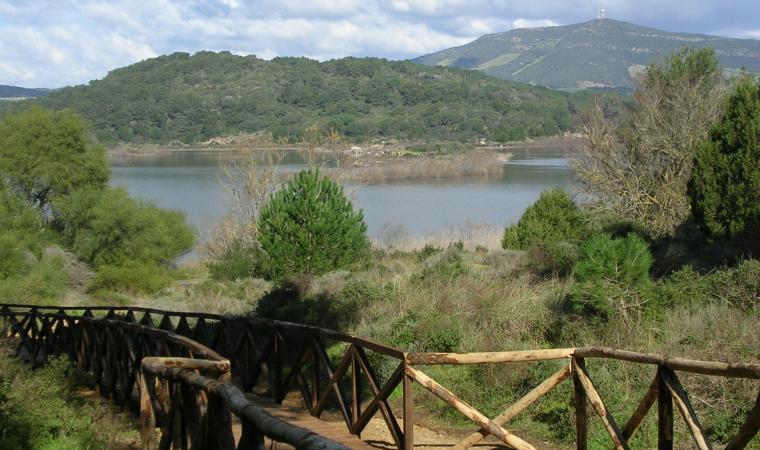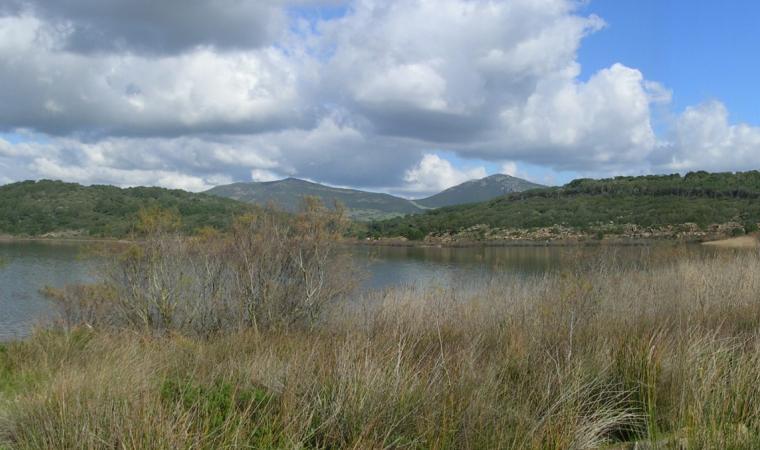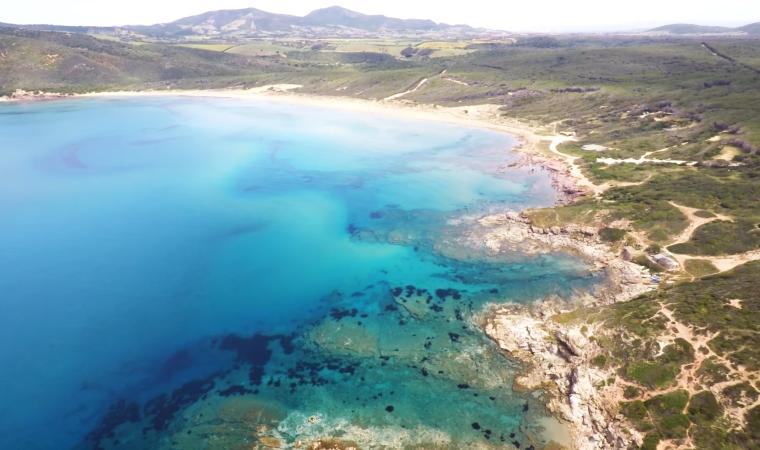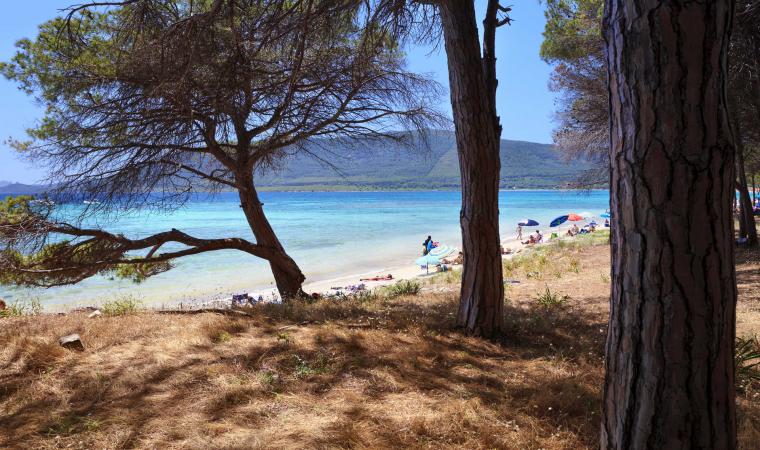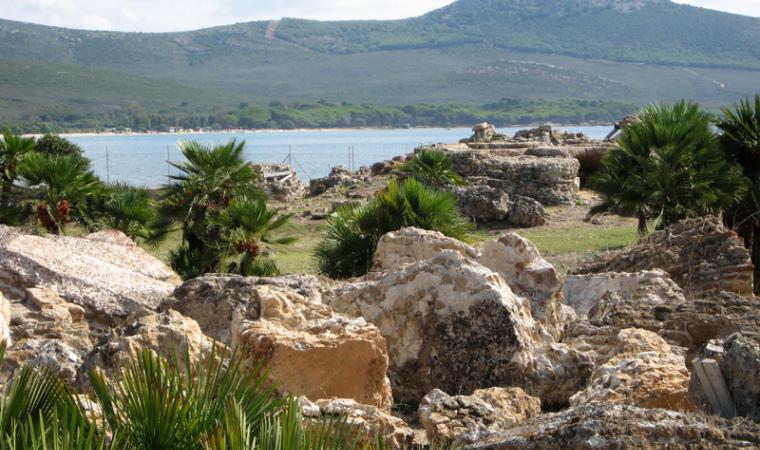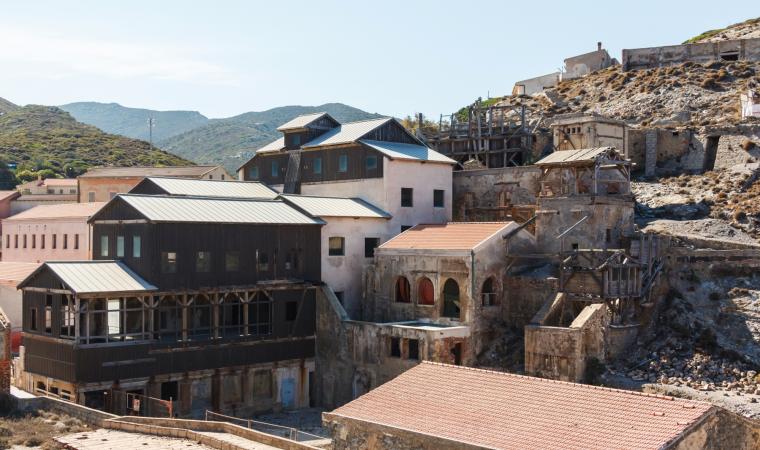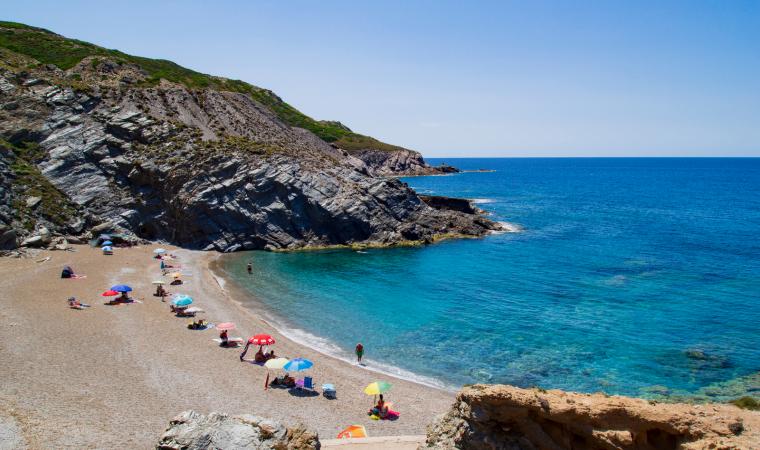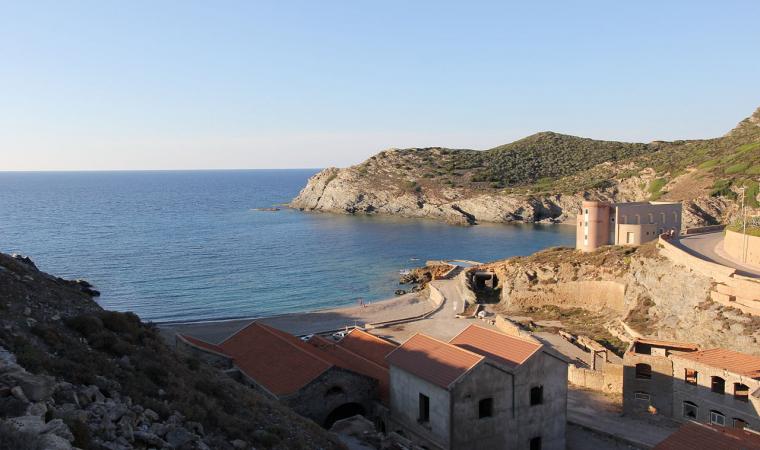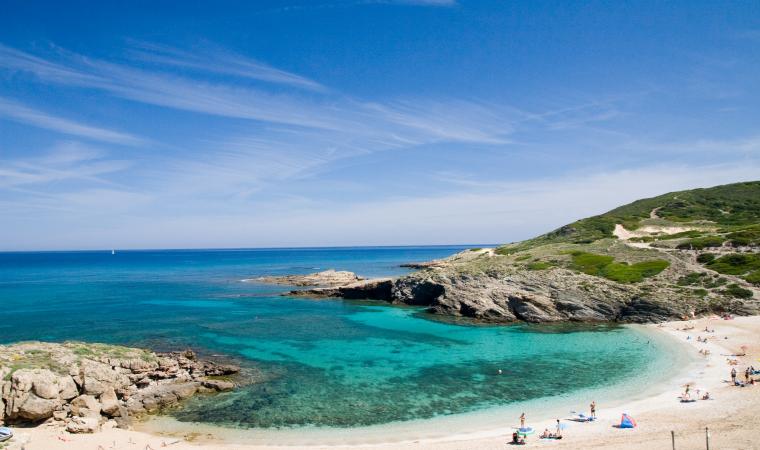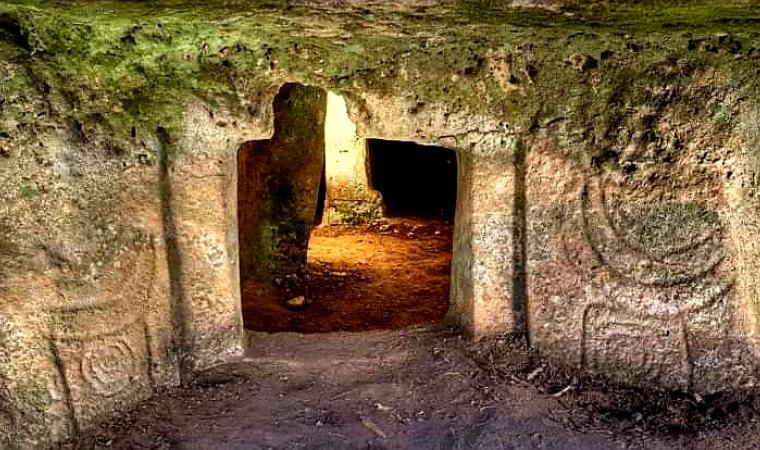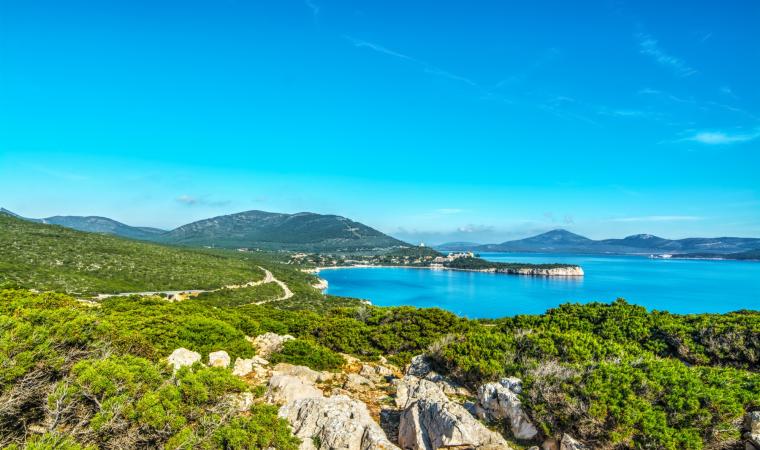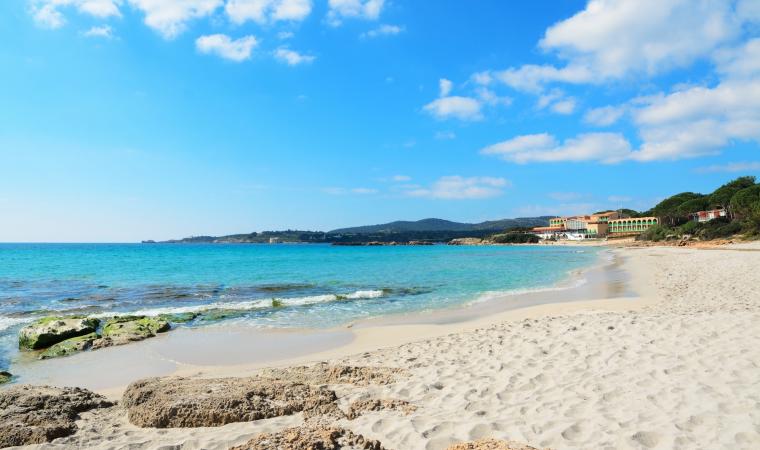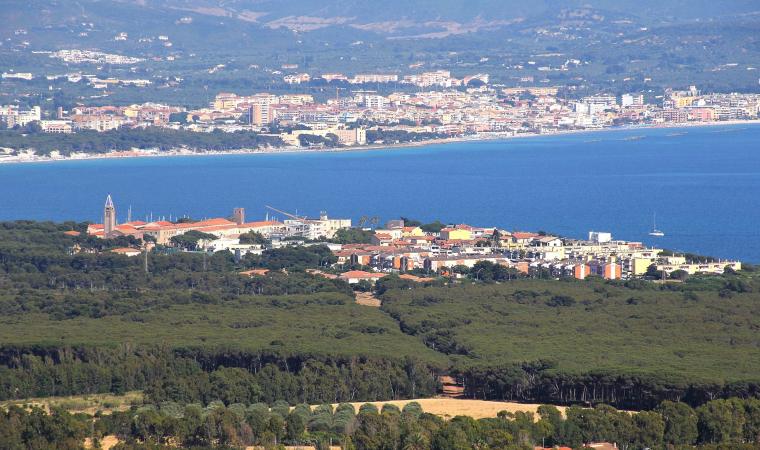According to legend, an ancient city sank in its waters, while history tells us that the Germans poured an unexploded arsenal into it and the current news describes it as a destination for spellbinding walks or rides on a mountain bike or on horseback. The Baratz is the only natural lake on the Island, surrounded by lush vegetation and bordered towards the sea by impressive sand dunes (up to thirty metres high), which separate it from the beautiful beach of Porto Ferro. Its body of water occupies 1125 hectares in the vast territory of Sassari, thirty kilometres away; the nearest town is Alghero, twenty kilometres away. You can reach it from state road SS 291, turning left at the junction leading to Capo Caccia, eight kilometres beyond the hamlet of Santa Maria La Palma in the Alghero area.
Its irregular perimeter, twelve kilometres long, is vaguely rectangular, with three inlets: the north-eastern one almost forms a branch on its own. The basin was formed following the damming of river valleys, once submerged by the sea (rias), by an imposing sandbar carried by coastal storms and wind. Rising thirty metres above the sea, it collects oligosaline water, ‘almost’ freshwater, with small waterways: the main tributary is the rio dei giunchi (rivulet of the rushes). It has no emissaries, yet the depth remains stable (or decreases) due to the permeability of the dunes: it is currently six and a half metres deep. Its waters have irrigated the surrounding fields, cultivated and used for grazing since the 19th century, in connection with the development of the nearby mines of Argentiera.
The territory that includes Baratz, Porto Ferro and the series of dunes is unique in Sardinia and has been recognised as a site of Community interest. It is part of the geo-mining park of Sardinia, adjacent to the regional park of Porto Conte and near the Asinara National Park. Employees of the Centro Educazione Ambientale e Sostenibilità - CEAS (Environmental Education and Sustainability Centre) accompany you in the exploration of its ecosystems, rich in biodiversity. Around the lake there is a border of reeds, cattail thickets and tamarisk trees of various heights. All around, there is a thick pine forest, dating back to the mid-20th century, which at times gives way to Mediterranean nature: strawberry trees, junipers, lentisks, heather, lavender, myrtle and rosemary. Their fragrances are very intense. In spring, you can admire twenty types of wild orchid. A body of water and its surroundings are populated by purple herons, tawny pipits, marsh harriers, coots, mallards and kingfishers. You can observe them from sighting points: this is a birdwatching paradise. Among the reptiles, the marsh turtle stands out. At dawn and dusk, it becomes a water hole for mammals. The wood is crossed by easy, signposted paths: one is coastal, by the tower of Bantine Sale, which dominates the reddish-yellow expanse of Porto Ferro, and unwinds across various little coves as far as the forest of Le Prigionette, the northern border of Porto Conte; another leads from the beach to the lake and a third circular path runs around it.
Charm and mystery surround the Baratz, the protagonist of unusual legends. The most famous one tells us that the valley that collects its waters originated from the sinking of the ancient city of Barax, now buried beneath the water and silt. It tells us that its inhabitants lived in luxury and greed, committing all kinds of sins. God punished them for their conduct. On nights when the moon is full, you seem to hear the tolling of bells and the desperate cries of the inhabitants coming from the water. Another popular tale is linked to legend and brings to mind the story of Orpheus and Eurydice. God decided to save a young girl who had served him faithfully and obediently. He told her to flee the town as soon as possible, in disguise, but that she should never look back. As soon as she heard the roar of the city being sucked into the depths of the earth, she was unable to resist and turned to look back: she was turned to stone and swept away by the waters. The history of the lake is also intriguing. It was a German base during the Second World War and, upon the order to withdraw, it became a makeshift ‘depot’ of ammunition and mines. There was no time to transport all the war equipment, so it was thrown into the lake. At the end of the 20th century, the water level dropped, bringing some bombs back up to the surface. This was followed by work to reclaim and recover an arsenal of unexpected proportions, largely unexploded.

